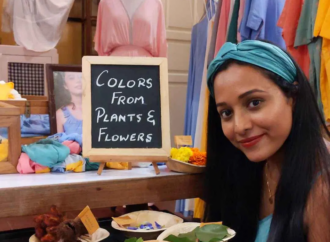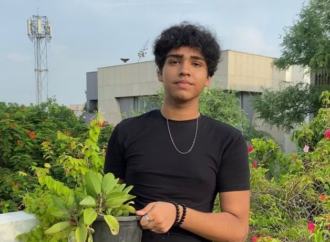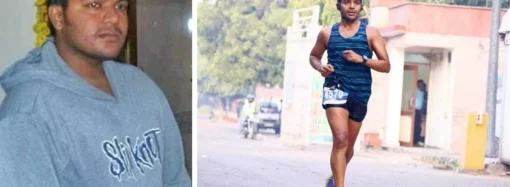We’re safer and healthier when we have school counsellors and social workers who are trained to support students’ emotional needs instead of neglecting them or pretending they don’t exist.
It was January 2021, after a long day of virtual school, and a cold sense of intense dread and an inexplicable feeling like I’m going to die settled over me.
I’m safe in my house — I can see the light where my mom’s working downstairs — but I feel like I’m in danger. I make my way to my room, keeping all of the lights off, and sit on my bed. The task of breathing becomes laborious; any calm I had turned into panicked, gasping breaths, and the more I try to right myself, the worse the attack gets.
It’s only when I jam earbuds into my ears and blast a song that I finally calm down. I rock myself back and forth until the tears stop, then haul myself onto my feet. It was my first panic attack. Navigating uncharted territory I felt devastatingly alone.
The following month, on February 3, a classmate killed herself.
She was a few days younger than me, and to imagine the pain she was in sends an electric shock to my nervous system. The impact of her death echoes throughout my community in the whispers we exchange, sudden shifts of the eyes and the heaviness in our heels as we walk.
We’re drowning.
Student mental health was already at a low before the lockdown; the pandemic exacerbated the issue and strained the relationship between students and counsellors. Counsellors say anxiety rates are up, and with a big developmental chunk missing from most students’ lives, social-emotional skills are suffering too. This hits especially hard for teenage girls and LGBTQ students, studies say.
During the 2021 school year when I had my first panic attack, schools in my state of Georgia did not meet the state-mandated 1:450 counselor-to-student ratio. They still don’t. This is a long way from the 1:250 ratio recommended by the American School Counselor Association.
Students feel alone – and they are
Without fully funded mental health services, students are left to suffer alone. Months after my classmate’s suicide, I felt isolated and depressed. I didn’t know how to deal with my emotions, and the idea of receiving help felt inconceivable.
In the absence of trained professionals, we as students are left to pick up our own pieces. Even when I was in pain, I found myself taking the role of the “therapist friend.” I’d talk my friends through every panic attack they had, every suicidal thought — every crisis.
I noticed isolated classmates without anyone to talk to and people who didn’t feel safe enough to reach out to professionals. They often cited previous negative encounters as the reason why. Appointments were hard to access; meetings were uncomfortable or unhelpful.
It’s not the school counsellors’ fault. The counsellor’s role has shifted from solely academic to also taking care of student mental health, many counsellors aren’t adequately trained to meet student mental health needs, and counsellors are often understaffed and overworked.
An estimated 14 million students are in schools with police officers, but without a counsellor, nurse, psychologist, or social worker.
The presence of officers instead of counsellors in schools disproportionately pushes students of color into the school to prison pipeline, and leads to escalation in situations which could have been diffused by an unarmed professional.
The presence of SROs means fear-mongering and brutality and increases incidents of excessive force, usually to Black and Latino students.
According to the Advancement Project, more than 25 per cent of school police assaults were on students with disabilities or students who reported mental health concerns, and over 80 per cent of victims of school police assaults since 2011 have been Black students.
There are systemic reasons why students are suffering, and concrete steps we can take to achieve true safety in our schools, but divisive politicians instead blame critical race theory, AP African-American Studies and transgender youth simply seeking acceptance.
Fund counselling resources – not culture wars
These politicians are funding culture wars, not children. Rather than enforcing ‘zero-tolerance policies’ that put students of colour at risk, schools should turn their attention to reforming counselling and creating positive school environments and support systems.
They should answer school counsellors’ calls for more staffing and funding, as well as the cries for help from students, who with the right support, all have bright futures ahead of them. Funding for adequate counselling gives students the resources and strength to build better lives for themselves. It’s what we deserve.

In May 2021, I started to get better. I learned that asking for help was essential. I started seeing a psychologist. I explored new hobbies and rediscovered old ones. I didn’t just pull myself out of a depressive state, I learned how to cope – and I didn’t do it alone.
Now, well into my freshman year of high school, I know things aren’t perfect, but I no longer feel alone. And I know that if I feel like I’m falling, there are lots of people around that can catch me.
Every student should have this support – especially those who can’t find it at home. We can fully fund mental health services in every school to meaningfully address the ongoing youth mental health crisis; there just needs to be a willingness to do so.
Systems of punishment do not mitigate fear nor do they negate the need for care and compassion for our overall well-being. We’re safer and healthier when we have school counsellors and social workers who are trained to support students’ emotional needs instead of neglecting them or pretending they don’t exist.
Prioritizing our mental health needs is what care looks like. It is what safety looks like. In an uncertain and sometimes scary world, it’s the least we can do. It’s what we as children deserve.




























Leave a Comment
Your email address will not be published. Required fields are marked with *